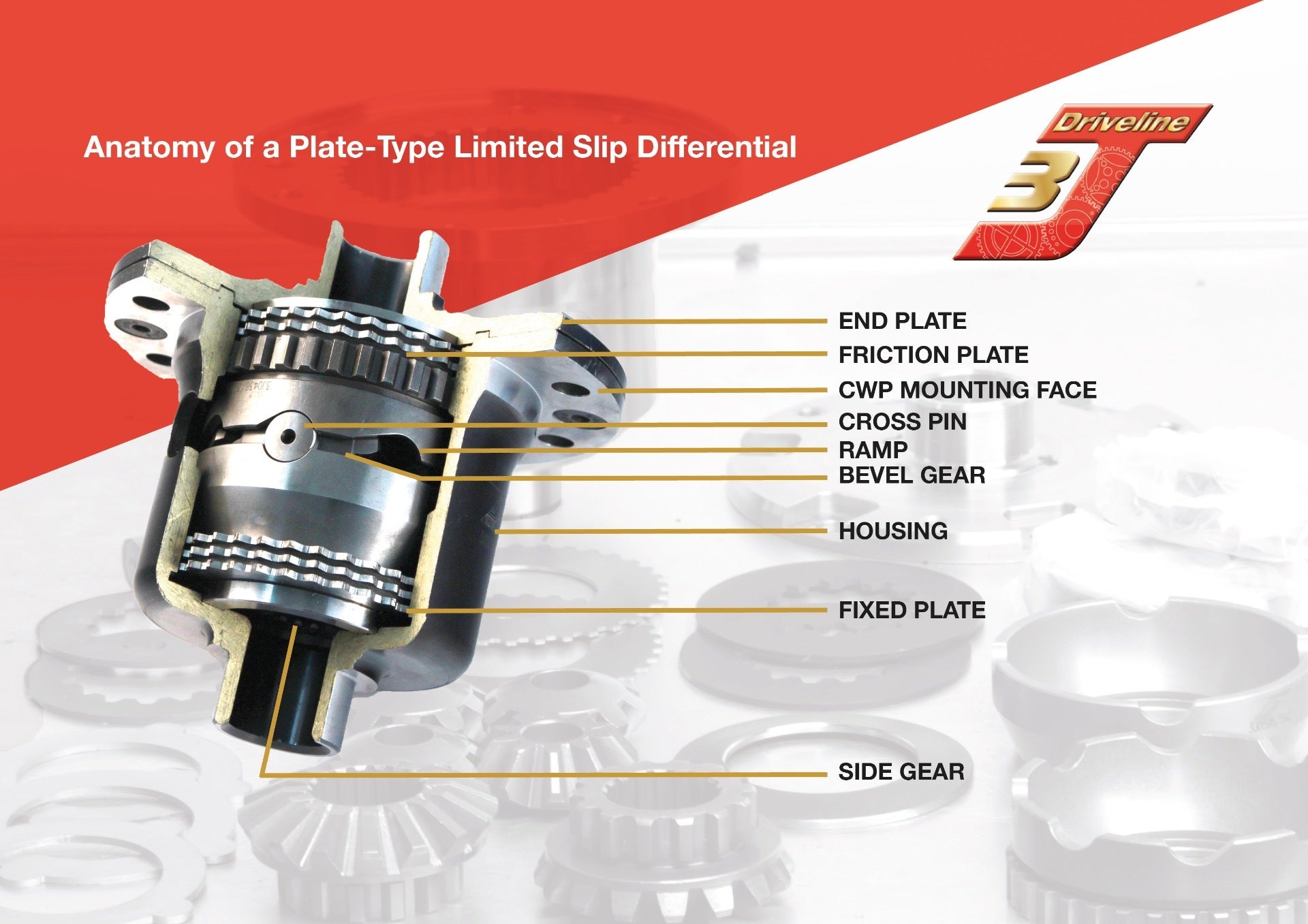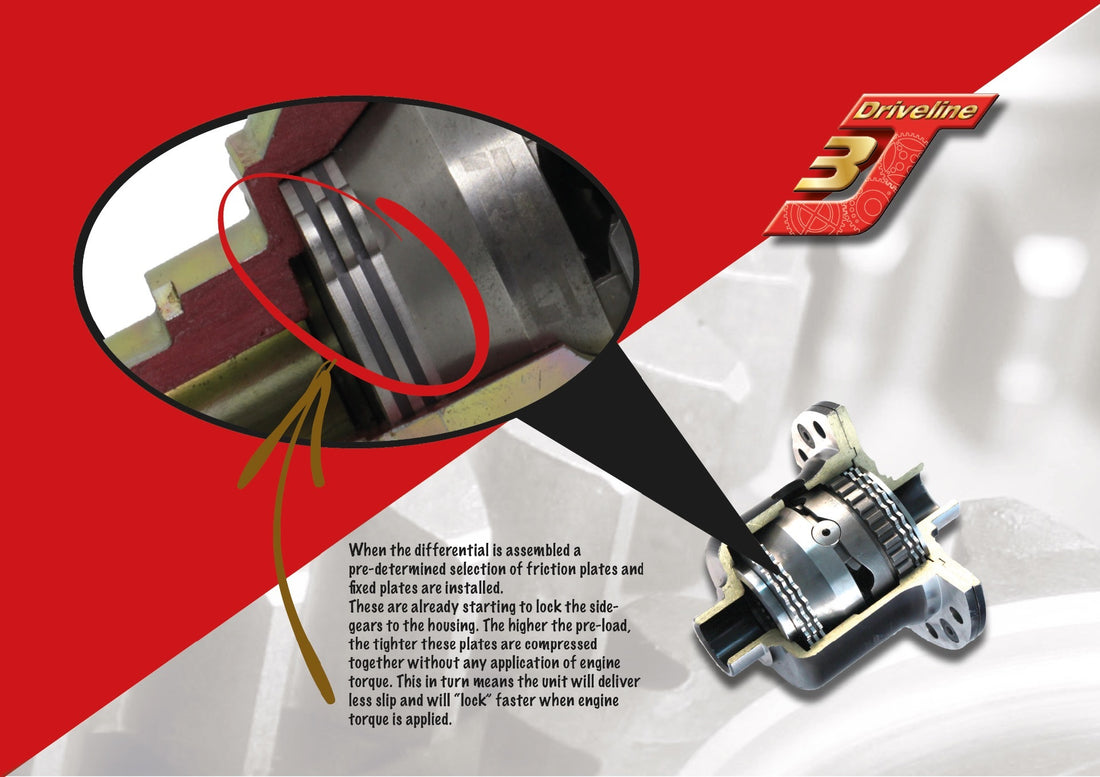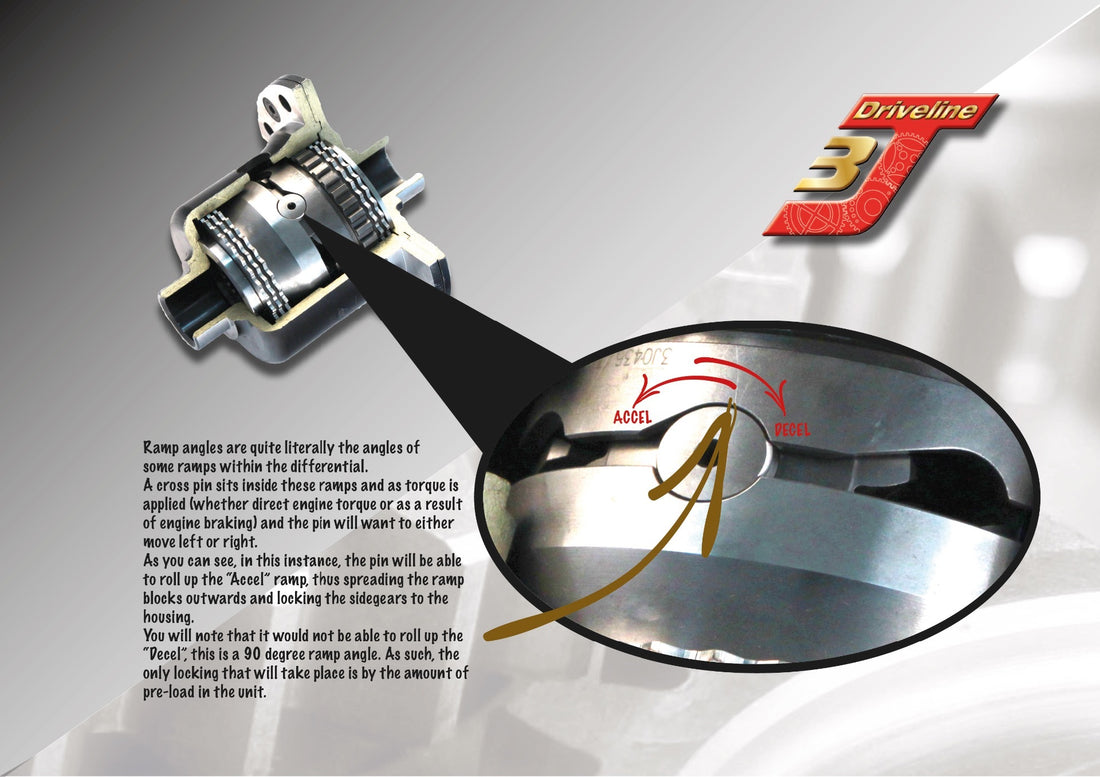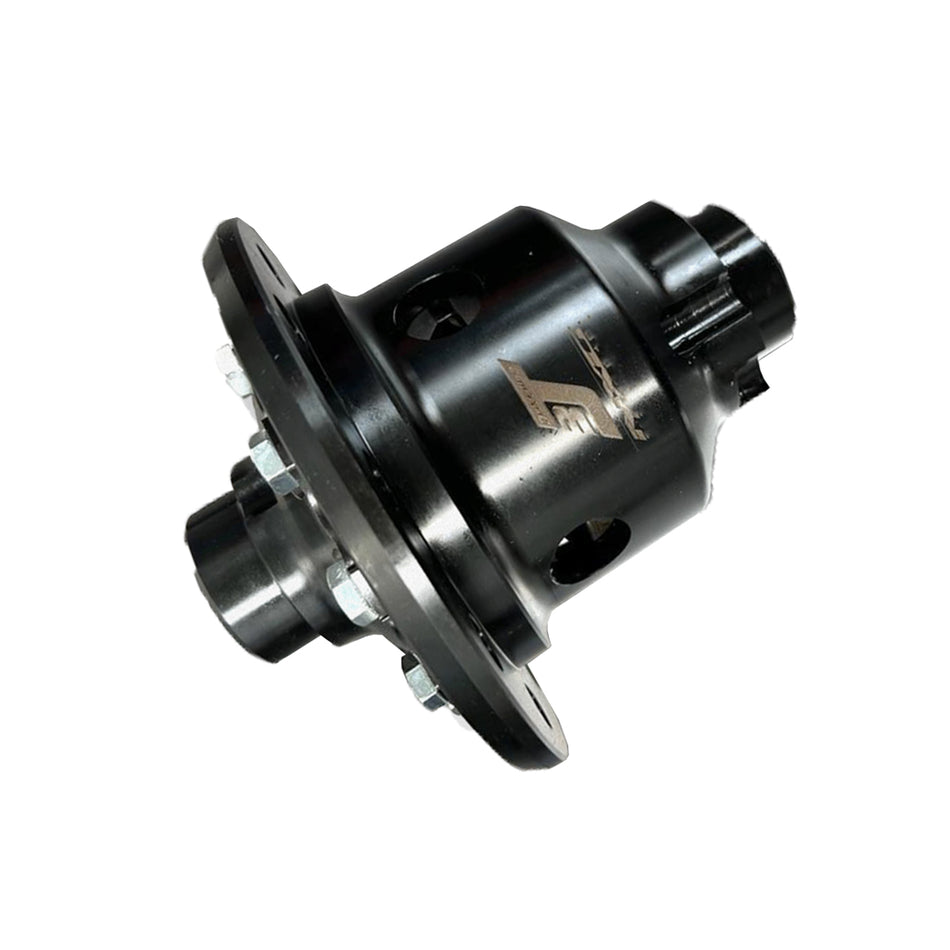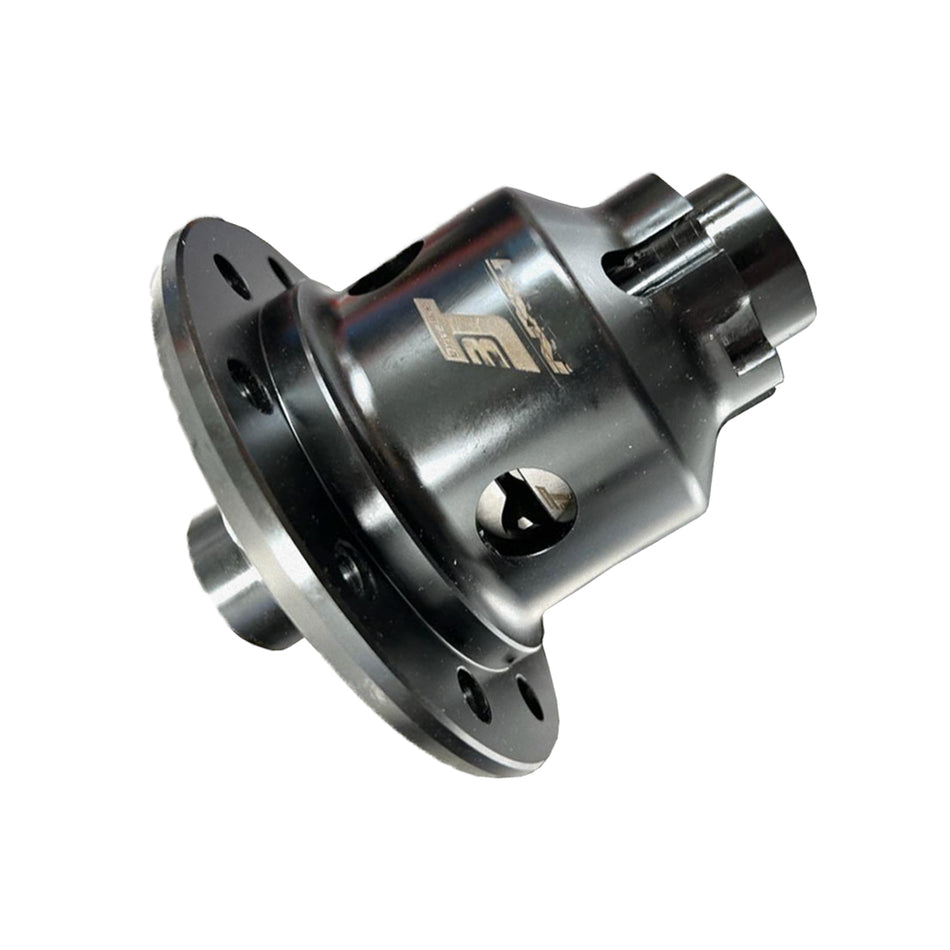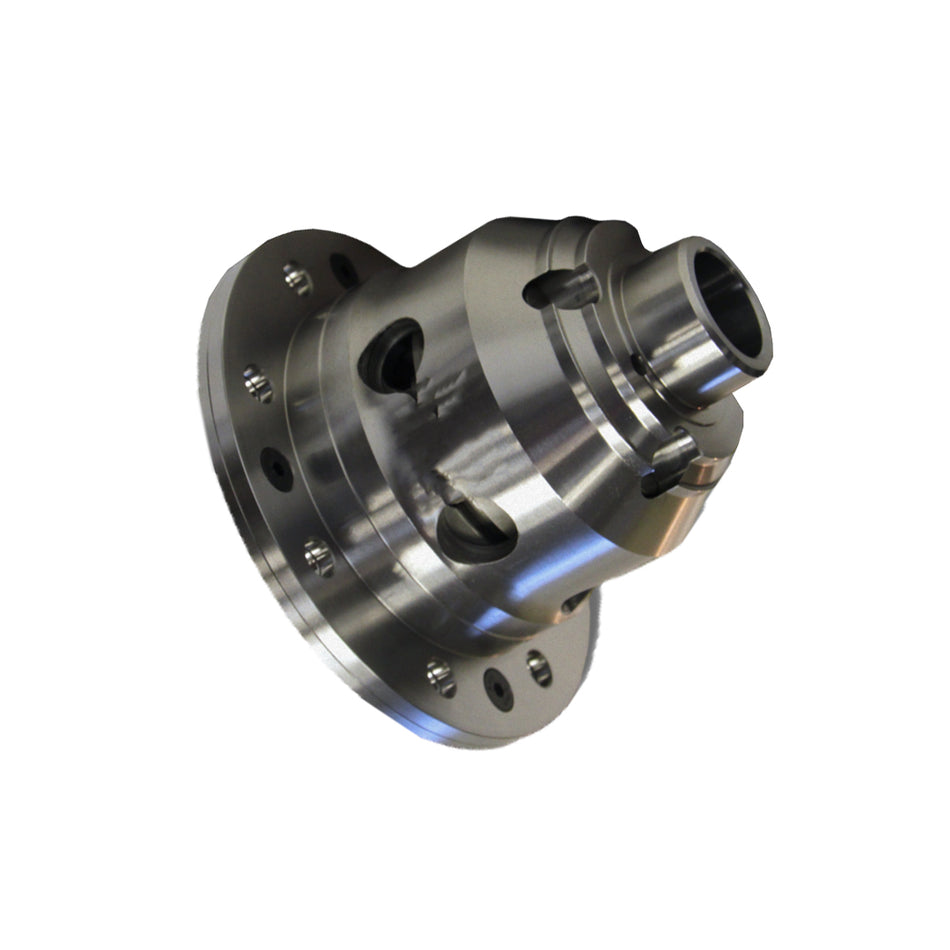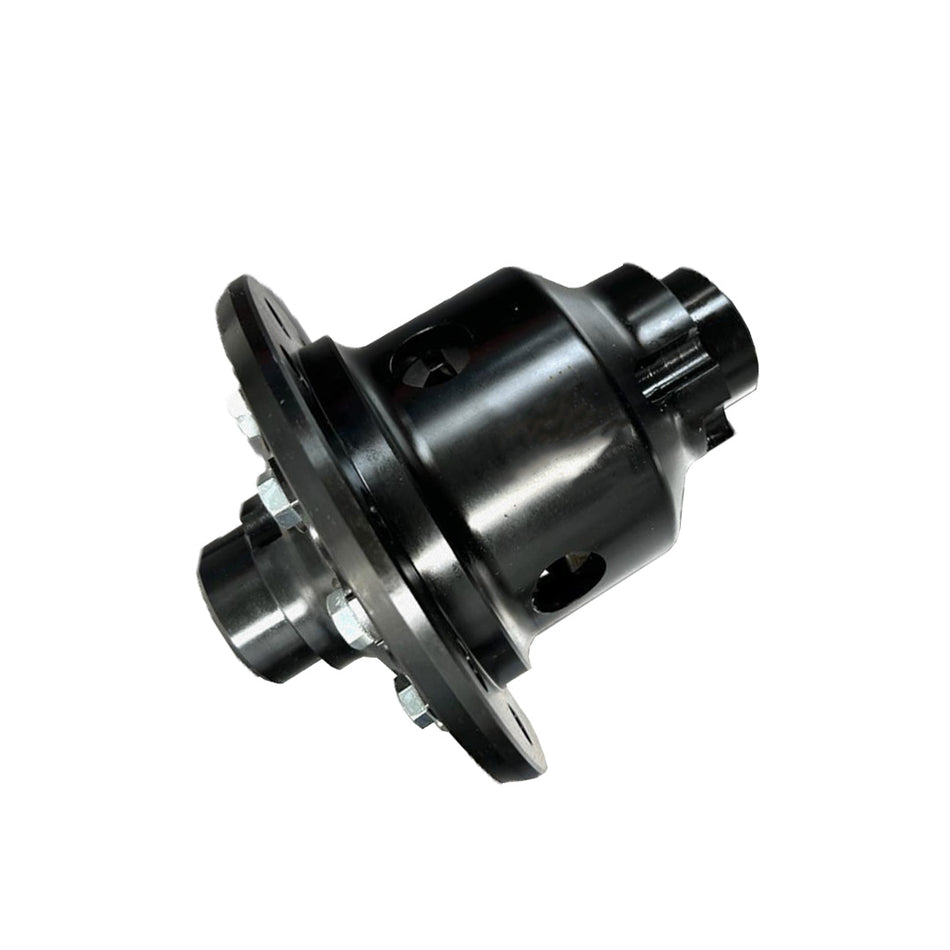Thanks to 3J we can have a deeper look into how their limited slip differentials work. Selecting a plate-type Limited Slip Differential (LSD) is ideal for drivers seeking controlled wheel lockup in specific applications. The degree of lock and the speed at which it engages can be precisely adjusted based on the differential setup. During acceleration or deceleration, the cross pin ascends the ramp, exerting force on the friction plates. This compression effect locks both sides of the differential together, effectively connecting to your halfshafts or driveshafts. This nuanced mechanism allows for fine-tuning, providing the driver with optimal control over wheel behavior and enhancing overall traction and stability. Choose a plate-type LSD for a tailored driving experience that meets your performance and handling preferences.
Pre-Load:
Gain insights into the mechanics of plate-type limited slip differentials through an understanding of pre-load. The interplay between fixed plates and friction plates generates axial loading, introducing a controlled level of friction. This minute friction becomes crucial when transmitting low torque, ensuring the side gear locks to the differential housing, directing drive torque to the non-spinning wheel. Acting as the foundation of the plate-type LSD, pre-load establishes the starting point for differential functionality. Bevel gears within the differential cage exert an outward force on the side gears, transmitted to the clutch plate pack when wheel spin occurs. This process compresses the plates, effectively locking the side gears to the housing. The degree of pre-load dictates the ease with which the plates compress, influencing the unit's locking efficiency. Choose a differential with tailored pre-load for optimal control and enhanced performance
Ramp Angles:
Explore the intricacies of torque application in plate-type limited slip differentials as the clutch pack undergoes further loading. With the introduction of additional power, whether through direct application or the torque generated during engine braking, the bevel gear shaft's pressure rings slide outward toward the driveshafts. This movement compresses the clutch plates, intensifying the locking effect. The force exerted outward is influenced by the ramp angle, with lower angles generating higher force and steeper angles reducing force. Notably, a 90-degree ramp angle, commonly found in fast road differentials on the deceleration side, limits additional pressure application. In contrast, a 25-degree ramp angle facilitates easy pin travel, enhancing the locking effect. Choosing the appropriate pressure angle involves considering various factors such as vehicle weight, dimensions, engine torque, and specific usage requirements. Make an informed decision for optimal performance based on your vehicle's unique characteristics.
1-Way vs 1.5-Way vs 2-Way:
Discover the versatility of 2-way LSDs, featuring identical ramps for acceleration and deceleration. A fundamental 45/45 (2-Way) configuration provides approximately 25% lockup during both driving and coasting, ensuring a balanced and predictable performance. This setup, with light pre-load, minimizes wheelspin, offering improved traction compared to open units. Adjusting pre-load can further reduce wheelspin. Shallow ramp angles enhance aggression, appealing to those seeking optimal weight transfer on turn-in and acceleration from the apex.
For enhanced versatility and user-friendliness, consider a 1.5 Way LSD. Typically featuring a shallower ramp angle on the drive side than the deceleration side, a 35/45 (1.5 Way) setup offers around 40% lock under acceleration and 25% lock when coasting. This configuration enables aggressive cornering, enhances grip on exit, and maintains stability during turns.
In 1-Way LSDs, often used in front-drive cars and select rear-drive applications, a 40/90 ramp angle (1-Way) ensures maximum turn-in and exit grip without lockup during deceleration. Optimize your vehicle's performance by choosing the LSD configuration that aligns with your driving preferences and vehicle dynamics

